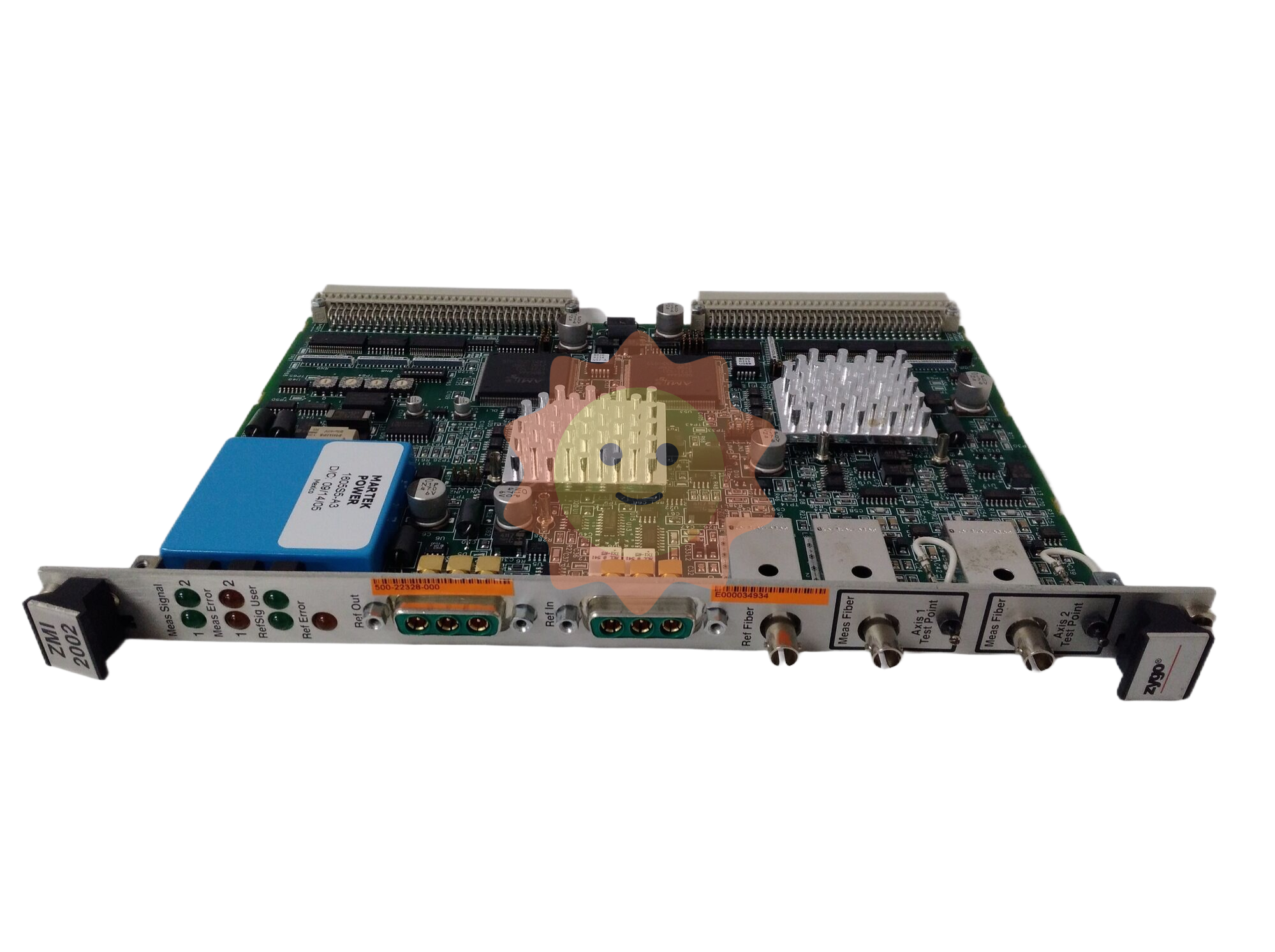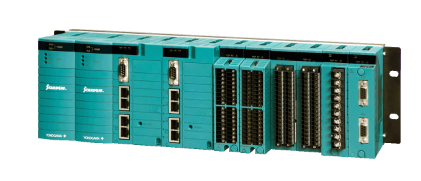The ZYGO ZMI-2002 8020-0211 measurement board is a universal basic laser measurement core component under the ZYGO ZMI-2002 series. It focuses on standardized design and wide adaptability, and is positioned as the "signal processing center" of the laser measurement system. It connects the laser head with the backend control/data system, providing high-precision and highly compatible laser parameter measurement solutions for industrial testing, laboratory research and other scenarios.
ZYGO ZMI-2002 8020-0211 Measurement Board
Model identification and core positioning
1. Model information disassembly (comparing segmented models)
Complete model: ZYGO ZMI-2002 8020-0211
The ZYGO ZMI-2002 8020-0211 measurement board is a universal basic laser measurement core component under the ZYGO ZMI-2002 series. It focuses on standardized design and wide adaptability, and is positioned as the "signal processing center" of the laser measurement system. It connects the laser head with the backend control/data system, providing high-precision and highly compatible laser parameter measurement solutions for industrial testing, laboratory research and other scenarios.
2. Core functional positioning
As a universal laser measurement board, its core positioning is the "standardized signal processing center", connecting the laser emission module (laser head) with the backend control/data system, with functions covering:
Multi dimensional signal acquisition: Receive raw signals such as light intensity, wavelength, polarization state, and beam position output from the laser head, and preprocess the signals through built-in high-precision acquisition circuits (such as low-noise amplifiers and high-resolution ADCs) to ensure the accuracy of the raw data;
Real time data computation: Integrated with general-purpose DSP/FPGA chips, supporting standardized data processing algorithms (such as filtering, fitting, and deviation calculation), it can output real-time measurement results of laser parameters (such as power fluctuation, wavelength drift, and beam pointing deviation), meeting the computational requirements of conventional high-precision measurements;
Standardized interface interaction: Provides universal device interfaces (compatible with mainstream ZYGO laser heads) and universal communication interfaces (such as Ethernet, RS485) to achieve stable connection with the laser head and efficient data transmission with the upper computer/control system. It also supports standard control command reception and adapts to multi brand system integration.
Core technical features (derived based on universal positioning)
1. Signal processing capability (universal design)
Acquisition accuracy and rate: Adopting a standardized high-precision acquisition scheme, the sampling rate is ≥ 500 kHz (meeting the requirements of conventional laser parameter monitoring), the ADC resolution is ≥ 16 bits, and it can capture μ W level power changes and 0.5 arc level beam pointing offset. Compared with customized models, it reduces the ultimate performance design, but meets the vast majority of industrial/scientific measurement scenarios;
Parameter measurement range: Supports laser power measurement range of 10 μ W-10 mW (universal power range), wavelength measurement coverage of 632 nm-1550 nm (mainstream laser wavelength), polarization state measurement accuracy ≤ 1 °, beam diameter measurement range of 0.1 mm-10 mm, no need to adjust hardware for specific wavelengths/powers;
Calculation delay: Standardized algorithm optimization, data calculation delay ≤ 5 ms, although higher than customized<1 ms, fully meets the real-time requirements of conventional measurement systems (such as industrial testing and laboratory analysis).
2. Interface and Communication (Standardized Configuration)
Equipment connection interface: equipped with 2-4 universal laser signal input interfaces (such as SMA interface, BNC interface), compatible with ZYGO ZMI-2002 series laser heads and some 7702 series laser heads (via standard adapter cables), without the need for customized dedicated interfaces;
Upper computer communication: Supports Gigabit Ethernet (TCP/IP protocol) and RS485 industrial bus (Modbus protocol), with a maximum communication rate of 1 Gbps (Ethernet), meeting the real-time transmission of large amounts of measurement data, and compatible with mainstream industrial control systems (such as PLC, SCADA);
Control interface: Provides 8-16 standard TTL digital IO interfaces, supports linkage control of external devices (such as relays and indicator lights), and can achieve standardized control functions such as measurement threshold alarm and device start stop.
3. Stability and environmental adaptability (universal working condition design)
Power supply adaptation: Adopting a universal wide voltage DC power supply design, supporting 12-24 VDC (compatible with most industrial power supplies), built-in overvoltage, overcurrent, and short-circuit protection circuits, power ripple ≤ 20 mV, avoiding the influence of power supply noise on measurement, and reducing the need for special power supply specification adaptation compared to customized models;
Environmental tolerance: Operating temperature range of 0-45 ° C (conventional industrial environment), humidity of 0-90% (non condensing), basic anti electromagnetic interference capability (compliant with EN 55022 Class B standard), stable operation in ordinary industrial workshops and laboratory environments, without special temperature and humidity control or shielding design;
Calibration function: Built in basic self calibration module, supports manual/periodic automatic calibration (such as zero calibration, gain calibration), calibration accuracy deviation ≤ 0.2%, meets the general measurement accuracy requirements, and supports external standard signal calibration (adapted to third-party standard calibration equipment), without relying on ZYGO dedicated calibration tools.
Adaptation scenarios and system integration
1. Adapt laser systems and modules
Laser head adaptation: Priority is given to the ZYGO ZMI-2002 series universal laser head, while compatible with some models of the ZYGO 7702 series (such as 8070-0102-31/33/35 beam diameter 6mm models, through standard adapters), without the need for customized interface cables;
System type adaptation: Suitable for standardized laser measurement systems, such as general-purpose laser interferometers, industrial grade beam analyzers, laboratory laser parameter testers, etc., especially suitable for scenarios that require cost control and standardized integration (such as mass production testing lines, basic research in university laboratories).
2. Typical application scenarios
Industrial quality inspection: On the optical component production line, laser interferometers are used to measure the accuracy of lens surface shapes. The board provides standardized data output and adapts to the production line's automated inspection system to improve inspection efficiency;
Laboratory basic research: In the study of laser characteristics in universities/research institutions, as a universal measurement component, it collects parameters such as laser power and wavelength stability, supports docking with universal data acquisition software (such as LabVIEW), and reduces system construction costs;
Equipment maintenance and calibration: In the laser equipment maintenance scenario, as a portable measurement board component, combined with a simple control unit, it can quickly detect whether the laser head parameters are normal, providing data support for equipment maintenance.
Precautions for use (key points for universal adaptation)
Confirmation of laser head adaptation: Although it is a universal model, it is still necessary to confirm the signal type (such as analog signal/digital signal) and output interface specifications of the adapted laser head to avoid inability to connect properly due to interface mismatch. It is recommended to prioritize the compatible laser head model recommended by ZYGO manufacturer;
Power and communication configuration: When supplying power, it is necessary to confirm that the power supply voltage is within the range of 12-24 VDC to avoid damaging the board beyond the voltage range; The communication interface configuration should follow standard protocols (such as Ethernet IP address settings and RS485 baud rate matching) to ensure normal communication with the upper computer;
Calibration cycle and method: It is recommended to conduct a comprehensive calibration every 12 months (the stability of the universal version is slightly lower than that of the customized version). A third-party standard laser source can be used for calibration without relying on the ZYGO factory, reducing calibration costs; In daily use, it is recommended to perform zero calibration every time the device is turned on to ensure measurement accuracy;
System integration compatibility: When integrating into non ZYGO brand control systems, it is necessary to confirm the compatibility of communication protocols (such as whether Modbus protocol is supported), and if necessary, perform protocol conversion through software middleware to avoid data transmission abnormalities; At the same time, pay attention to the installation space of the board (refer to the general board size, such as 160 mm × 100 mm × 20 mm), and reserve sufficient heat dissipation space.
- User name Member Level Quantity Specification Purchase Date
- Satisfaction :
-









Email:wang@kongjiangauto.com





































































































































